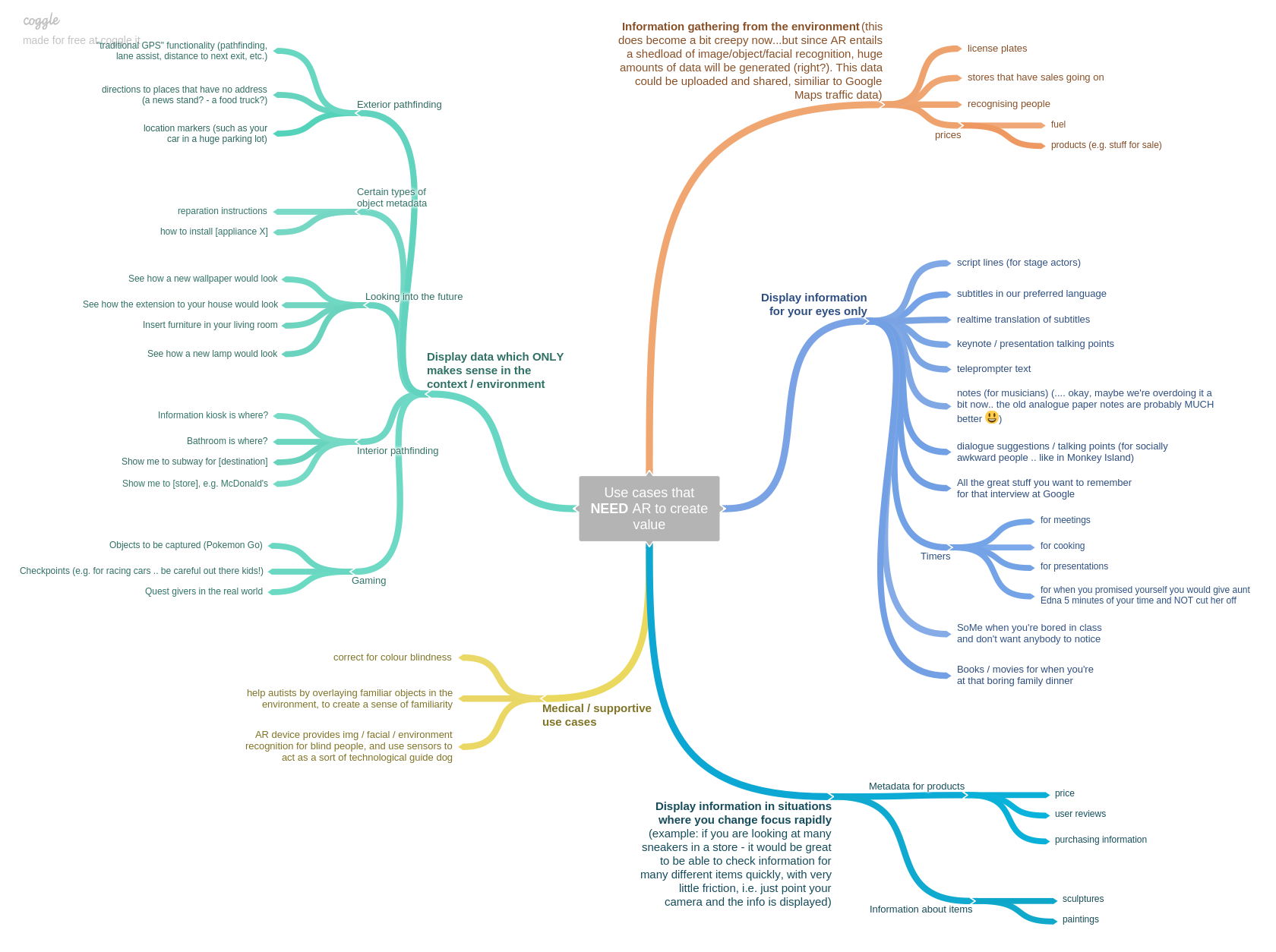1. Which AR (Augmented Reality) libraries exist on Android/iPhone?
- ARCore
- ARKit
- ARFoundation
- Vuforia
- Wikitude
- OpenXR
- ResightAR
- Viro
- 8th Wall
- OpenCV
2. What is the future of augmented reality?
The future of augmented reality is set to change that. You might be wondering why indoor navigation is such a big deal. But, if you have been to a large airport, a big hospital, a sprawling university campus, or a towering office building with confusing signs, you will know that people get flustered trying to find their way to their destination.
In the automotive industry, big companies like Ford have already tentatively adopted AR to create car designs. This is slated to slash production costs and save time.
3. What is the scope of augmented reality?
AR apps enhance the world in a number of way
- Superimposing images, digital information and/or 3D models
- Adding real-time directions
- Inserting labels
- Changing colors
- Altering environment appearance via "filters" on Instagram, Snapchat, and other apps
4. What are the type of Augmented Reality ?
Marker-based Augmented Reality- is commonly used for marketing and retail purposes. Marker-based AR uses markers to trigger an augmented experience.
Markerless Augmented Reality- is more versatile than marker-based AR as it allows the user to decide where to put the virtual object.
Location-based AR- Location-based AR ties digital content and the experience it creates to a specific place.
Superimposition AR- recognizes an object in the physical world and enhances it in some way to provide an alternate view.
Projection-based AR- is a little different than the other types of markerless augmented reality.
Outlining AR- recognizes boundaries and lines to help in situations when the human eye can’t.
5. What Augmented Reality API in Android ?
Depends on your tech stack -
- Android Development i.e apps written in Java or Kotlin - ARCore
- Unity Development i.e apps & games written in C# - ARFoundation or Vuforia or Wikitude
- IOS Development i.e apps written in Swift or Objective C - ARKit
- WebXR i.e web apps written in HTML, CSS and JS - AFrame
6. What are the main advantages of augmented reality?
- It is highly interactive in nature and interacts simultaneously with the real-time environment.
- It can be used by anyone for any business. It would adjust according to the application.
- It brings the virtual world closer to the real world.
- It has the ability to make things memorable and eye-catching as it can be applied as part of training programs.
- It saves money by testing critical situations to confirm success before implementing them in real-time.
- It enhances interactions and perception with the real-world.
Basically Augmented Reality and Mediated Reality are just synonyms of each other...
But the one important difference is how each of them interprets the information they receive...
Like what MR (Mediated Reality) does is, it just puts information onto your screen...
For example, if you were to point your MR equipped camera app to a table made of wood... MR would display a building which is standing on your table in your mobile screen...
But had your app been AR equipped... Then on your screen, there would not be a building standing on your wooden table...
There would be a tree...
See the difference here?... MR just gives you what you might want... Just basic information to display that came from a command...
But AR gives you what you might need... It understands your surrounding and augments it...
8. What are the killer apps for augmented reality?
3 apps that I (or my kids) actual use and where AR is a useful feature. So not actually "killer", still:
1. Localscope - browse your local world (http://www.cynapse.com/localscope)
2. Flight Radar 24 - ever wondered where that plane flying overhead was going or coming from? (http://www.flightradar24.com/apps)
3. Fairy Magic - do you have kids that love fairies and iPhones (http://www.inlifesize.com/). Good team behind this too.
9. How can augmented reality be used in education?Augmented Reality is today becoming the most useful and effective high-end tool for every industry like Elearning, E-commerce, Etc. Augmented Reality in eLearning is transforming the education industry with more advanced and powerful knowledge-sharing experience.
Also, We can say that technologies like AR in elearning are more a requirement than a luxury because today elearning is trying to acquire more learners around the world. After all, it has the potential to deliver more adequate and advanced education at a much affordable cost. This technology will help bring more users to the elearning software
because it can change the way people today see the education industry.10. How augmented reality business cards work?
Augmented reality apps works with an image (best know as marker) that basically triggers the interaction with the user in the moment when the user points the marker with the device (phone, tablet etc.) camera. So they will need both the marker (your business card) and a mobile device with a web cam.
What you can do with AR cards is embed an AR marker in the card itself or adjust your logo to have a solid black border so that it could be used as a marker (this is currently a limitation in AR), and then this marker can become the trigger to show information to the user.
There is so much you can do with augmented reality from automatically showing addresses with interactive maps, to links for directly sending e-mails or phone calls, even an interactive portfolio. The possibilities are endless the limit is your imagination.







1 Comments
Everything you need to know to build a location-based AR.This app uses data about a mobile device’s location and position and adds virtual elements to the real environment. In this article: https://www.cleveroad.com/blog/location-based-ar-apps-development/ we’ll mostly be talking about location-based AR mobile applications.
ReplyDeletePlease do not enter any spam link in the comments box.